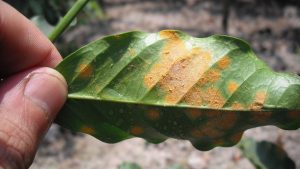#006: Zombie Ants
The parasitic fungus Ophiocordyceps unilateralis infects rainforest ants, turning them into “zombie ants.” The fungus takes over the ants’ minds and directs the ants to die in the most advantageous spot for the fungus. Although this ant/fungus interaction has been known since 1859, it only recently (within the past 5 years) fell under the public eye after a study examined some of the specifics of this interaction. The story starts when a fungal spore lands on the exoskeleton of an unsuspecting ant. The spore germinates and forms an infection structure called an appressorium. This structure is capable of producing enormous pressure (fungal plant pathogens have been known to produce pressures equal to the pressure inside the wheel of a 747) which allows the fungus to penetrate the ant’s exoskeleton. Then, the real fun begins. Ant colonies exhibit a behavior known as “social immunity,” where diseased individuals are forcibly removed from the nest. Since the fungus cannot reproduce inside the nest, it uses its host to place itself in an optimum location to release its spores. In order to accomplish this, the fungus takes control of its host’s brain. Thus, this dead ant walking is transformed into a “zombie ant.” First, the fungus orders the ant to the ground, if it’s not already there (often these ants will be found in trees, so they first walk or fall to the ground). Then the ant walks around for a while as if it were drunk. When the fungus is ready, it directs the ant to an incredibly specific point in the forest:
The ants ‘are manipulated to bite onto very specific locations on the underside of a leaf, the main vein of a leaf, leaves orientated north, northwest, roughly 25 cm off the ground,’ said David Hughes, a behavioral ecologist at Penn State. ‘And all of this happens with a remarkable precision around solar noon, making this one of the most complex examples of parasite manipulation of host behavior.’*
This precise location and time reflect the optimum conditions the fungus requires to reproduce: temperature, humidity, etc. Once the ant reaches this point and the fungus is ready to kill the ant, it gives one final instruction: bite. With the dead ant’s mandibles securely fastening it to the leaf, the fungus can do its work without worrying about the ant falling. The fungus proceeds to consume the ant’s tissues and produces a mushroom that fruits out of the ant’s head. From its perch on the underside of a leaf, the mushroom then drops its spores onto unwitting ants scurrying around on the ground below. This whole process seems to be a very effective strategy for the fungus, as it can be highly virulent and has been known to wipe out entire ant colonies (however, wiping all the ants out is not beneficial to the fungus, so evolution tries to maintain a very delicate balance).
Bite marks found on fossilized leaves suggest that this parasitic relationship has been evolving for the past 48 million years. The most recent studies have also identified a number of separate species that were previously lumped in with O. unilateralis. Each species seems to be co-evolved with only one species of ant, so there are likely nearly as many species of “zombie ant fungi” as there are species of ants in the rainforest. In a final twist to this story, the “zombie ant fungi” are themselves parasitized by other fungi. These fungi prevent O. unilateralis and related species from producing viable spores, thus helping the ant colony.
See Further:
* http://www.wired.com/wiredscience/2013/09/absurd-creature-of-the-week-zombie-ant-fungus/
http://news.psu.edu/story/277383/2013/05/21/research/getting-bottom-zombie-ant-phenomenon

![#057: The Witch’s Hat, Hygrocybe conica [Archived]](https://www.fungusfactfriday.com/wp-content/themes/hueman/assets/front/img/thumb-medium-empty.png)





![#011: Characteristics of Kingdom Fungi [Archived]](https://www.fungusfactfriday.com/wp-content/themes/hueman/assets/front/img/thumb-small-empty.png)


4 Responses
[…] In recent years, DNA evidence has dramatically altered how Cordyceps is classified. In 2014, the Golden Thread Cordyceps was moved to its current genus, Typocladium. Before that, belonged to Cordyceps or Elaphocordyceps and many sources still use one of those two names for this fungus.2 Cordyceps has now been broken up into two distinct lineages that are closely related but different enough to be placed in two separate families. Typocladium was assigned to the family Ophiocordycipitaceae, which mostly includes insect pathogenic fungi like the “Zombie Ant” Fungus, Ophiocordyceps unilateralis (FFF#006). […]
[…] controls the ants’ actions, infected ants are commonly referred to as “zombie ants” (see FFF#006). Researchers studying the fungus made a remarkable discovery last year: the fungus doesn’t […]
[…] The pathogen can be very aggressive and is capable of wiping out entire ant colonies (for more, see FFF#006). Traditionally, mycologists believed that ant colonies dealt with the fungus using “social […]
[…] bodies, and force them to climb up plants before killing them and fruiting out of their heads (see FFF#006 for more). In the final stage of infection, the fungus directs the ants to climb up a plant and […]